OA Summit 2020: OA Roadmap Summary
Summary of Oracle Analytics Roadmap Announcements made at OA Summit 2020
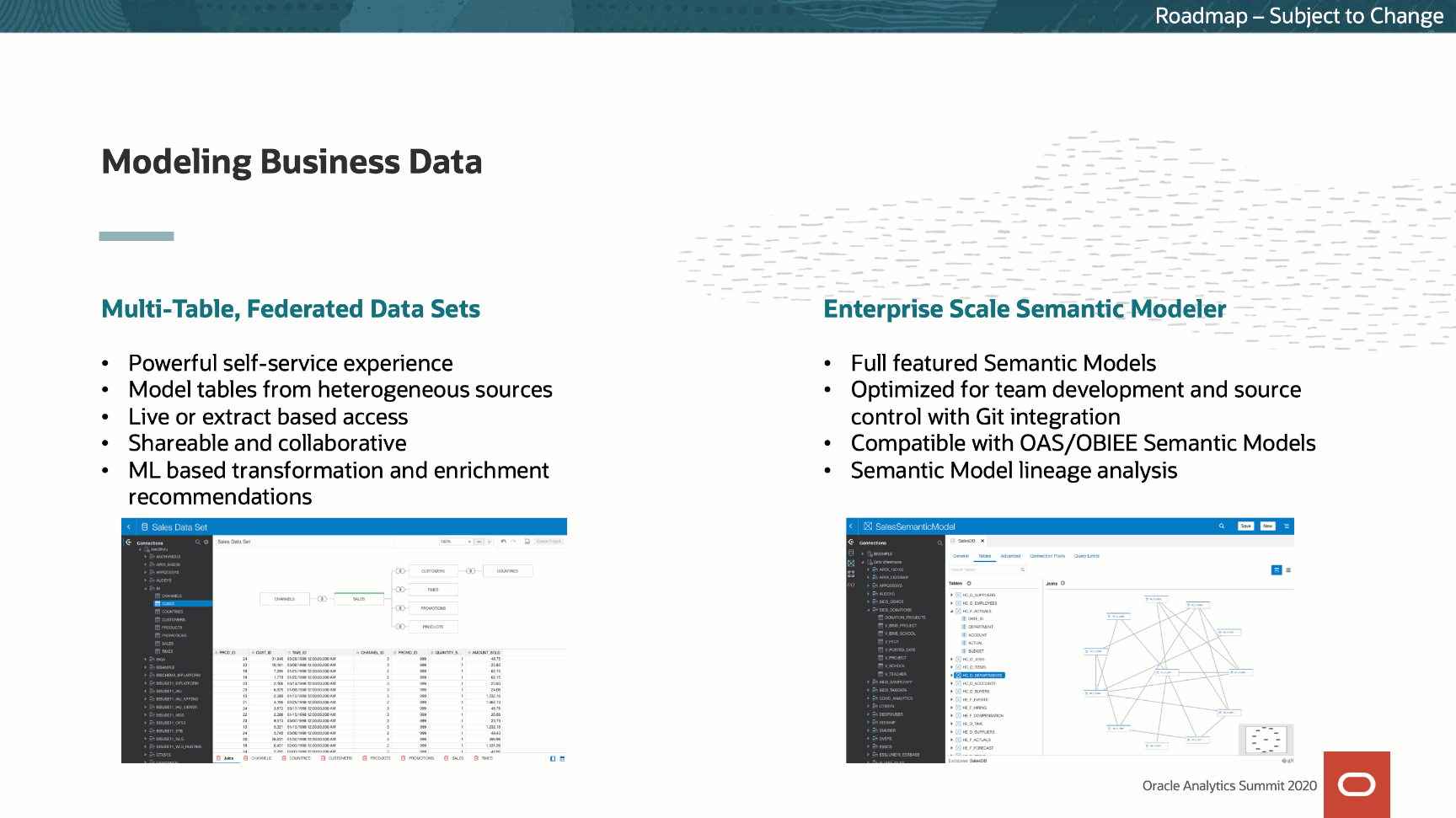
If you are in the Oracle Analytics space, the OA Summit is a great source of content: from Keynotes, customer stories, Partners deep dives; the website is a collection of stories about Oracle Analytics. We've been part of the initial episode talking about how you can start your journey to Data Science with Oracle Analytics!
In Tuesday's session, Gabby Rubin, VP of Product Management, and Jacques Vigeant, Senior Director Product Strategy, shared a series of insights about the product roadmap that we'll cover in this blog.
Public Roadmap & IdeaLab
This is quite big news in the Oracle space, now there is a clear vision about what's coming in the product, accessible by everyone on a public website.

The public roadmap works well also in conjunction with IdeaLab: a place where everyone in the OA community can suggest new product features and up/downvote or add comments on other people's ideas. These hints are reviewed by Product Managers and, if considered valid, included in future releases of the product!
Converged Analytics
The state of the art in the Analytics space offers a neat separation between self-service tools and centralized IT-governed ones. Even for Oracle Analytics, we have two separate approaches as of now: self-service data preparation via Data Visualization vs enterprise IT-driven via RPD.

What was announced at the OA Summit is that the two approaches will converge: there will be the option to self-create a multi-table and multi-source federated dataset which can be shared. This approach empowers the end-user and works on top of the usual self-service data-source definition workflow enabling for each identity in the diagram, ML-based transformations and enrichment recommendations as well as caching setting definitions.
Empowering the end-user also means enabling best software development practices like versioning, certification and promotion capabilities on top of the asset created. The multi-table federated dataset created by end-users will seamlessly transition into enterprise-level semantic models without IT intervention.
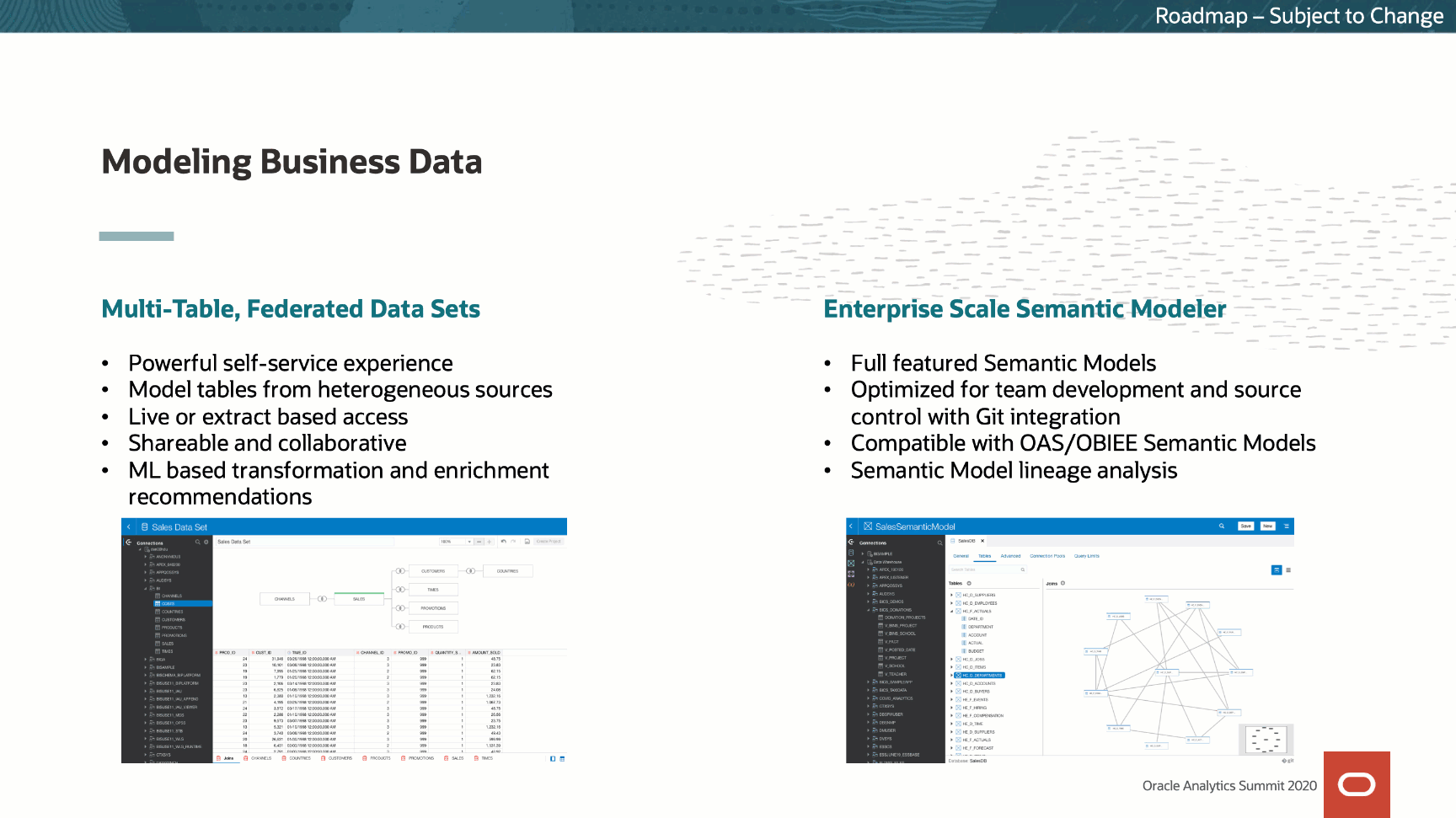
From the enterprise side, as announced during OOW19, we'll see a new web-based semantic modeler which will substitute good old Admin Tool. Unlike the current "Lite Data Modeler", the new product will enable the same level of definition complexity we can find in today's RPDs thus will be compatible with every OAC/OAS prebuilt repository. The new web-based semantic modeler is not only a pure replacement of the Windows-based admin tool, but it also offers a native source control integration with Git and in-built options for Data Lineage explorations.
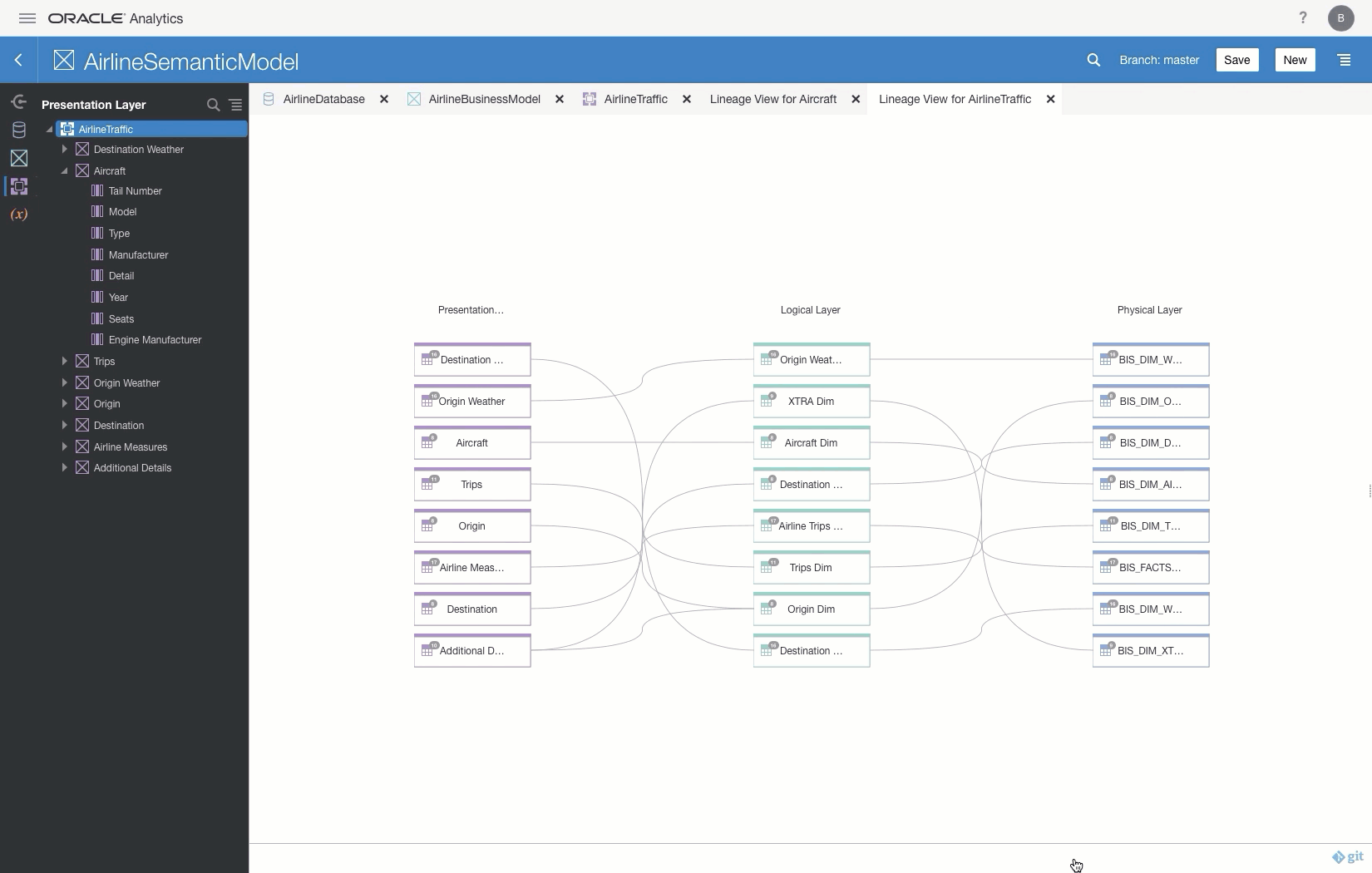
As mentioned the new tool is web-based; if you're an expert RPD developer and worried about different development methodology slowing down the build process, well, there is big news for you! You will be able to edit Repositories via the new JSON based Semantic Modeling Markup Language! Yep, you'll be able to define all the layers of an RPD in JSON syntax, even outside the web-based semantic modeler tool itself. This opens a huge variety of opportunities for source-control, CI/CD pipelines, as well as automatic (coded) builds of RPD artifacts.
Oracle Analytics as Enterprise Keystone
As briefly described in my Data Virtualization blog post, Oracle Analytics can (and should) be considered the Analytics Keystone in the enterprise: the convergence of IT-driven and self-service metadata models can already be exposed via ODBC in OAS enabling the downstream application to access the data inheriting the security settings defined in the Repository. The OA team is working to offer the equivalent in JDBC format for all Oracle Analytics products!

Oracle Analytics is also enhancing the number of source-system connectors available: we'll soon have the option to connect directly to Oracle EPM Cloud from Data Visualization, and similar connectors are arriving for JDBC sources and Google's Big Query.

Machine Learning in OA
Augmented Analytics and Machine Learning capabilities have existed for a long time in Oracle Analytics. A new important improvement in this area will enable Data Flows to use Machine Learning models created outside OA via the usual GUI.

Data Scientists will be able to use their favourite environment and toolset in order to analyse the data and build models. The models built in external systems like Oracle Databases, Oracle Data Science Services, or 3rd-party services could then be registered within OA and used to score data in Data Flows making the Data Scientist and Data Analyst collaboration much easier increasing the ML ubiquity in enterprises.
Predictions explainability will also be possible directly in OA, with details of each model exposed appropriately depending on the model type.
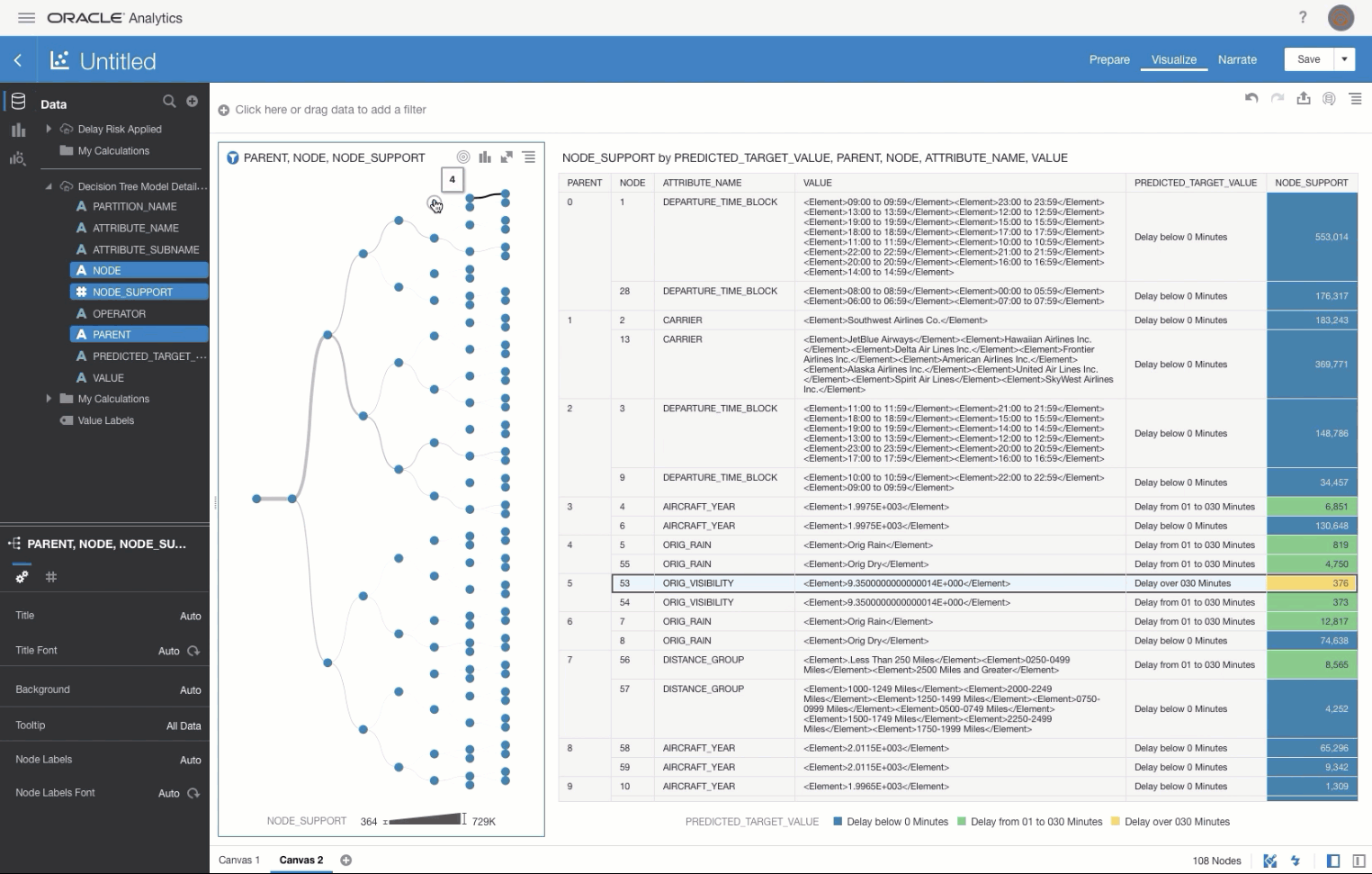
In addition to the above, OA will also allow the usage of Advanced Database Analytics like Sampling, Un-pivoting, Clustering, Anomaly Detection or tokenization with more to come. This allows the usage of already existing functions (avoiding to reinvent the wheel) that can perform securely on massive amounts of data in the Oracle Database.
Data Visualization New Features
There is also some news which has already been shipped in the latest product or will be available soon. Some examples are:
- Adaptive content: we can enable content scrolling in Data Visualization projects, allowing proper spacing of otherwise crowded visualizations
- Canvas Filter control: a prompt that can filter only a subset of analysis registered to it (similar to the Master-details concept in Analysis)
- OAC Embedding Framework: That allows to integrate OA capabilities into external web applications
- Digitalized Map Layers: create an infographic on top of any image, all directly in OAC
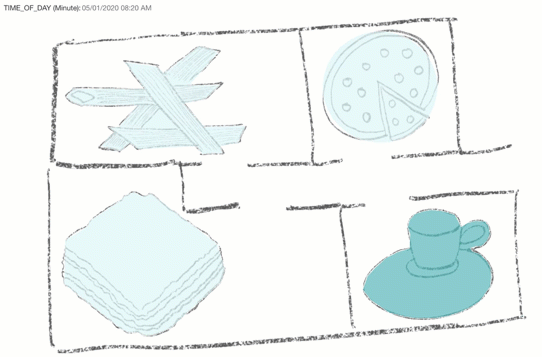
OA on Mobile
What about consuming OA content in mobile devices? Data Visualization content is adaptive, the visualization size and appearance will change depending on screen type, so all created content could simply be accessed via mobile browser. Oracle is also investing in Day by Day, which acts as a personal proactive Data Assistant and now enables the threshold-based notifications with more visualization types coming later in the year.

The new announcement regarding mobile is the new Oracle Analytics Mobile App which substitutes the Oracle BI Mobile HD and will provide a way to use, search and collaborate on curated content exposed by OA with an experience in line with modern apps.

More on this, All the Oracle Analytics Apps will enable collaboration: several people will be able to access and comment on visualizations and data avoiding the need to switch to other tools like emails.
A whole new wave of capabilities is in the Oracle Analytics roadmap, for any doubt or questions feel free to reach us!
